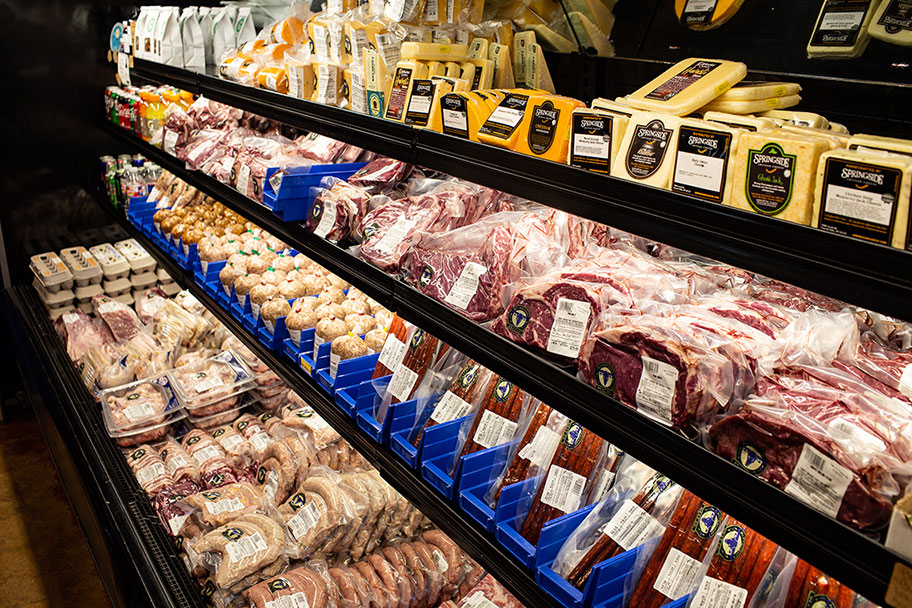Discover the Art of the Butcher's Cut in a Modern Meat Market
In the ever-evolving landscape of modern-day meat markets, the butcher's cut has transcended its typical roots, merging age-old craftsmanship with contemporary practices. What truly establishes the modern butcher apart is their ability to forge a deeper connection in between consumers and the origins of their meat.
Development of Butchery Strategies
The development of butchery strategies reflects a rich tapestry of advancement and adaptation driven by advancements in technology, adjustments in consumer need, and a deeper understanding of meat scientific research. Historically, butchery was a craft gave via generations, with techniques developed over centuries to take full advantage of yield and flavor. Nonetheless, the industrial change introduced automation, changing conventional practices and enabling massive processing.
The mid-20th century saw butchery techniques better refined by scientific insights into muscle mass biology and meat aging, enhancing both tenderness and preference. Developments like vacuum product packaging and refrigeration expanded product shelf-life, permitting butchers to branch out offerings and boost quality control. This period additionally noted the increase of specific equipment, such as band saws and meat slicers, which increased precision and efficiency in meat handling.

Computerized systems now help in tracking pet provenance and maximizing cuts to satisfy specific consumer preferences. Additionally, a rebirth in artisanal butchery has actually arised, blending traditional abilities with contemporary knowledge to provide to consumers looking for moral and lasting meat options.
Recognizing Meat Cuts
Understanding the ins and outs of meat cuts is important for both butchers and customers looking for quality and value. For butchers, specific cuts reflect skill and regard for the craft, guaranteeing very little waste and optimal yield.

Understanding muscular tissue make-up is critical; muscles made use of a lot more regularly by the pet tend to be harder and are best fit for slow food preparation techniques, while less-used muscles, like those discovered in the loin, are much more tender and perfect for barbecuing or roasting. Familiarity with these differences empowers customers to make informed selections, improving their cooking endeavors.
Picking High Quality Meat
Selecting the best meat entails greater than simply picking an aesthetically enticing piece from the display screen. bagley farms meat market edwardsville il. The art of choosing top quality meat requires a critical eye and knowledge of particular attributes that represent quality and excellence. First of all, take note of the shade; beef must have a bright, cherry-red hue, while lamb must exhibit a soft pink tone, and pork a light pink. This suggests the meat is fresh and hasn't been subjected to oxygen for also long.
Second of all, take into consideration the marbling, which refers to the white flecks of fat within the muscle. Proper marbling is an essential indicator of tenderness and flavor, as it melts during cooking, enhancing the meat's juiciness. Keep in mind, greater marbling often correlates with exceptional quality cuts, such as USDA Prime.
Texture is one more critical variable; meat should really feel solid to the touch, not slimed or extremely soft. Furthermore, bear in mind the scent. Fresh meat needs look at this now to have a tidy, neutral scent, without any type of sour or off-putting smells.
Combining Cuts With Cooking Methods

On the other hand, tougher cuts like brisket and chuck roast are rich in collagen, which breaks down into gelatin when prepared gradually. These cuts are excellent for braising or slow roasting, enabling the meat to soften over time and establish deep, complicated tastes. Cuts such as brief ribs and pork shoulder get on well with slow-cooking methods, where prolonged cooking times change their durable structures right into delicious meals.
Lamb shanks and oxtail, which call for prolonged food preparation to soften, are perfect candidates for stewing or sluggish simmering. These approaches coax out abundant, hearty flavors while maintaining dampness. By comprehending the one-of-a-kind features of each cut, chefs and home chefs alike can elevate their culinary developments, ensuring each recipe is both pleasing and unforgettable.
The Butcher's Duty Today
Browsing the developing landscape of the modern meat market, the butcher's role today extends past plain prep work of cuts. Contemporary butchers are culinary craftsmens, instructors, and supporters for lasting techniques.
Along with crafting accurate cuts, butchers currently engage straight with customers, read this post here using cooking advice and customizing selections to fit private needs and choices. Their proficiency in meat aging, marbling, and taste profiles encourages customers to make enlightened decisions, improving their culinary experiences. This tailored service exhibits the butcher's evolving role as a trusted advisor in the kitchen area.
Furthermore, butchers are crucial in reducing waste, using entire pets to develop varied products such as sausages and stocks. This extensive approach not just appreciates the animal however likewise straightens with modern sustainability goals. By doing this, the modern-day butcher embodies both custom and technology, adapting to more an ever-changing market while preserving the creativity and integrity of their craft.
Final Thought
The modern butcher's craft elaborately weaves standard methods with contemporary developments, emphasizing sustainable techniques and ethical sourcing. Proficiency in recognizing diverse meat cuts and high quality signs equips butchers to offer enlightened suggestions, aligning specific cuts with optimal cooking approaches. This proficiency not just elevates cooking experiences yet additionally reinforces the link in between consumers and the beginnings of their food. By recognizing historical techniques while accepting contemporary demands, the butcher's function remains crucial in today's advanced meat market (bagley farms meat market edwardsville il).